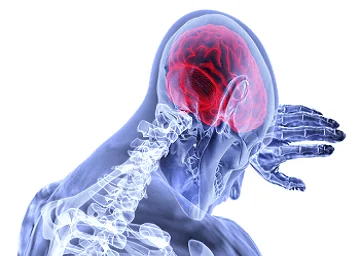Motor Deficits Following Traumatic Brain Injuries
Motor Deficits Following Traumatic Brain Injuries – Among the different injuries that someone could sustain in a traumatic accident, a brain injury is perhaps the most concerning. Most people associate their identity and personality with their brain and, unfortunately, damage to the neurons of the brain can be permanent. Even though there has been a tremendous amount of research performed in the field of brain injuries, these still have the potential to have devastating life consequences. According to some of the information that has been published by the Centers for Disease Control and Prevention:
- People over the age of 75 have the greatest chance of being hospitalized due to a traumatic brain injury.
- Toddlers and the elderly have the highest chance of visiting an ER for a traumatic brain injury.
- Motor vehicle accidents and falls are two of the most common causes of traumatic brain injuries.
- Falls are more common in toddlers and the elderly while motor vehicle accidents are more common in other age groups.
These statistics from the CDC show that the causes of traumatic brain injuries are wide and varied; however, they always need to be addressed quickly. Depending on the type and location of the brain injury, there are serious complications that might result.
Possible Causes of a Traumatic Brain Injury
There are many different ways that someone could sustain a head or brain injury. Some of these include:
- A slip and fall injury where people strike the back of their head.
- An auto accident where people hit their head on the dashboard or steering wheel.
- A motorcycle accident, particularly if the person is not wearing a helmet.
- A concussion that occurred while playing sports or during a physical assault.
Different complications can occur following a head injury. Depending on the location of a traumatic brain injury, somebody could sustain motor deficits. This would make it hard for them to move their arms or legs.
Why do Motor Deficits Happen?
There are many different reasons why motor deficits can occur following a traumatic brain injury; however, the most common cause is damage to the brain tissue that could happen with a cerebral contusion. Different parts of the brain control different parts of the body. Depending on where the damage to the brain has occurred, different parts of the body will be affected. The eyes are controlled by the occipital lobe, while the motor cortex controls the arms and legs. Damage to these nerves could make it hard for people to:
- Turn the pages of their favorite book
- Walk up and down the stairs
- Participate in their favorite sports
- Have trouble doing chores around the house
- Hold down the job or attend school
Diagnosing Motor Deficits Following Traumatic Brain Injuries
The first step is to diagnose a traumatic brain injury. When someone presents with symptoms of a brain injury (such as a headache, memory loss, and loss of consciousness), the doctor will order an MRI. This MRI could show a skull fracture, a bleed in the brain, and even a cerebral contusion.
After this, it is crucial to determine which motor deficits someone has. Therefore, the doctor will test the strength of the various muscle groups, such as the biceps and the quadriceps. The doctor could also order a nerve conduction study to see if signals are still traveling between the brain and the muscles. Once the motor deficits have been isolated, treatment can begin.
How are These Treated?
Earlier that it is treated, the better the prognosis. Therefore, it is important to identify a traumatic brain injury and address it appropriately. This could prevent the damage from worsening. Even though most nerve damage is permanent, intense physical therapy and rehab have been shown to help people regain some of this lost function. Exercises include strength, flexibility, and occupational therapy. This could make the difference between someone being on disability benefits for the rest of his or her life and the ability to return to school or work. Therefore, early, aggressive treatment is vital for those with a traumatic brain injury to maintain their quality of life. Even though early treatment can help people who have sustained a traumatic brain injury, it is important to look for help elsewhere as well.
Help from a Lawyer
When a loved one suffers a traumatic brain injury, it can be a stressful process. There are numerous causes of traumatic brain injuries, and all of these can lead to many questions. For help with this, it is essential to meet with a trained personal injury lawyer in Sacramento. Do not hesitate to reach out and ask for a helping hand. You and your family could be deserving of financial compensation.
Related Articles
Sacramento Brain Injury Lawyers
I’m Ed Smith, a brain injury lawyer in Sacramento. The motor deficits following a traumatic brain injury can be severe. If you or a loved one has suffered injuries in a car accident, call me at (916) 921-6400 or (800) 404-5400 for free, friendly legal advice.
I am a member of the Million Dollar Advocates Forum.
You can see our verdicts or settlements here.
Visit Yelp, Avvo, & Google to see our past client reviews.
Motor Deficits Following Traumatic Brain Injuries.
Photo by: The photo at the start of this article is seen in its original form on Unsplash. The image has been reproduced here with permission/ Motor Deficits Following Traumatic Brain Injuries.
:dr cha [cs 919] cv

